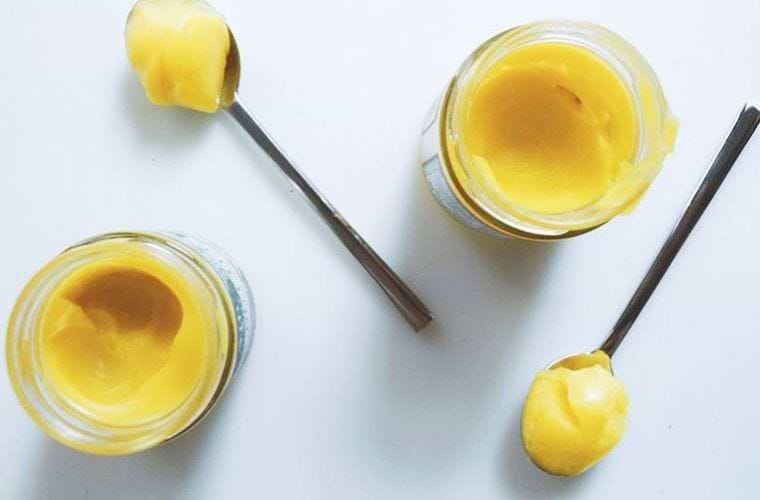GHEE
Ghee, also spelled "ghi", is a clarified butter and a staple ingredient in traditional Indian cuisine, where it is considered the purest and noblest fat. It’s made by gently heating regular butter at low temperature for a long time to separate its components. The mixture is then filtered to retain only the purest fat, free of water, lactose, and milk proteins: ghee.
ORIGIN AND PROPERTIES OF GHEE
For centuries, ghee has been an essential part of Ayurvedic cuisine, which comes from Ayurveda — the traditional Indian system of medicine based on the balance of energies and elements.
In Ayurveda, ghee is especially valued for its regenerating, nourishing, and detoxifying properties. It helps rebalance the body and supports digestion. Rich in phenolic antioxidants, it’s also recommended for eliminating toxins and boosting the immune system.
Ghee is also used topically in Ayurvedic medicine. It can soothe burns and sunburns, and is commonly used as a natural moisturizer for skin, lips, and hair.
In short, ghee offers a wealth of benefits for both nutrition and health. According to Ayurvedic philosophy, these two aspects are deeply interconnected — every food is chosen for its healing properties.
IS GHEE HEALTHIER THAN BUTTER?
This fat, still relatively unknown in Europe, is actually a great alternative to traditional butter.
First, unlike regular butter consumed in Western diets, ghee does not oxidize. The clarification process removes the components that spoil quickly, allowing ghee to be stored much longer, even at room temperature.
Second, ghee withstands very high temperatures (up to 250°C / 480°F), meaning it doesn’t burn or break down when cooking — which is important, since overheated fats can produce harmful compounds. You can safely use it for sautéing, frying, or baking.
Last but not least, ghee is suitable for those with lactose intolerance! Since the milk proteins and sugars are removed during clarification, ghee is naturally dairy-free and fits into lactose-free or casein-free diets.
